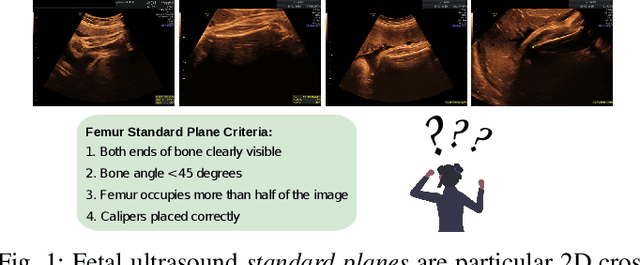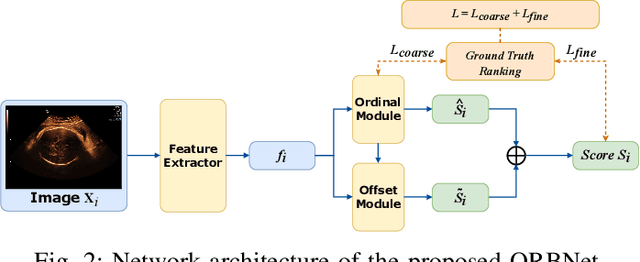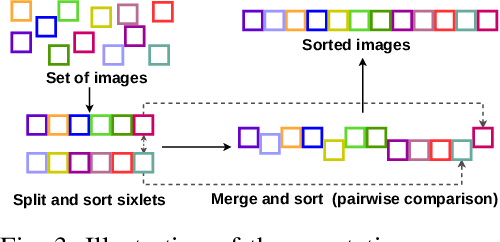Paraskevas Pegios
Causally Steered Diffusion for Automated Video Counterfactual Generation
Jun 17, 2025Abstract:Adapting text-to-image (T2I) latent diffusion models for video editing has shown strong visual fidelity and controllability, but challenges remain in maintaining causal relationships in video content. Edits affecting causally dependent attributes risk generating unrealistic or misleading outcomes if these relationships are ignored. In this work, we propose a causally faithful framework for counterfactual video generation, guided by a vision-language model (VLM). Our method is agnostic to the underlying video editing system and does not require access to its internal mechanisms or finetuning. Instead, we guide the generation by optimizing text prompts based on an assumed causal graph, addressing the challenge of latent space control in LDMs. We evaluate our approach using standard video quality metrics and counterfactual-specific criteria, such as causal effectiveness and minimality. Our results demonstrate that causally faithful video counterfactuals can be effectively generated within the learned distribution of LDMs through prompt-based causal steering. With its compatibility with any black-box video editing system, our method holds significant potential for generating realistic "what-if" video scenarios in diverse areas such as healthcare and digital media.
Graph Counterfactual Explainable AI via Latent Space Traversal
Jan 15, 2025Abstract:Explaining the predictions of a deep neural network is a nontrivial task, yet high-quality explanations for predictions are often a prerequisite for practitioners to trust these models. Counterfactual explanations aim to explain predictions by finding the ''nearest'' in-distribution alternative input whose prediction changes in a pre-specified way. However, it remains an open question how to define this nearest alternative input, whose solution depends on both the domain (e.g. images, graphs, tabular data, etc.) and the specific application considered. For graphs, this problem is complicated i) by their discrete nature, as opposed to the continuous nature of state-of-the-art graph classifiers; and ii) by the node permutation group acting on the graphs. We propose a method to generate counterfactual explanations for any differentiable black-box graph classifier, utilizing a case-specific permutation equivariant graph variational autoencoder. We generate counterfactual explanations in a continuous fashion by traversing the latent space of the autoencoder across the classification boundary of the classifier, allowing for seamless integration of discrete graph structure and continuous graph attributes. We empirically validate the approach on three graph datasets, showing that our model is consistently high-performing and more robust than the baselines.
* Published at Northern Lights Deep Learning Conference 2025
Counterfactual Explanations via Riemannian Latent Space Traversal
Nov 04, 2024Abstract:The adoption of increasingly complex deep models has fueled an urgent need for insight into how these models make predictions. Counterfactual explanations form a powerful tool for providing actionable explanations to practitioners. Previously, counterfactual explanation methods have been designed by traversing the latent space of generative models. Yet, these latent spaces are usually greatly simplified, with most of the data distribution complexity contained in the decoder rather than the latent embedding. Thus, traversing the latent space naively without taking the nonlinear decoder into account can lead to unnatural counterfactual trajectories. We introduce counterfactual explanations obtained using a Riemannian metric pulled back via the decoder and the classifier under scrutiny. This metric encodes information about the complex geometric structure of the data and the learned representation, enabling us to obtain robust counterfactual trajectories with high fidelity, as demonstrated by our experiments in real-world tabular datasets.
Unsupervised Detection of Fetal Brain Anomalies using Denoising Diffusion Models
Aug 07, 2024Abstract:Congenital malformations of the brain are among the most common fetal abnormalities that impact fetal development. Previous anomaly detection methods on ultrasound images are based on supervised learning, rely on manual annotations, and risk missing underrepresented categories. In this work, we frame fetal brain anomaly detection as an unsupervised task using diffusion models. To this end, we employ an inpainting-based Noise Agnostic Anomaly Detection approach that identifies the abnormality using diffusion-reconstructed fetal brain images from multiple noise levels. Our approach only requires normal fetal brain ultrasound images for training, addressing the limited availability of abnormal data. Our experiments on a real-world clinical dataset show the potential of using unsupervised methods for fetal brain anomaly detection. Additionally, we comprehensively evaluate how different noise types affect diffusion models in the fetal anomaly detection domain.
Diffusion-based Iterative Counterfactual Explanations for Fetal Ultrasound Image Quality Assessment
Mar 13, 2024



Abstract:Obstetric ultrasound image quality is crucial for accurate diagnosis and monitoring of fetal health. However, producing high-quality standard planes is difficult, influenced by the sonographer's expertise and factors like the maternal BMI or the fetus dynamics. In this work, we propose using diffusion-based counterfactual explainable AI to generate realistic high-quality standard planes from low-quality non-standard ones. Through quantitative and qualitative evaluation, we demonstrate the effectiveness of our method in producing plausible counterfactuals of increased quality. This shows future promise both for enhancing training of clinicians by providing visual feedback, as well as for improving image quality and, consequently, downstream diagnosis and monitoring.
Learning semantic image quality for fetal ultrasound from noisy ranking annotation
Feb 13, 2024



Abstract:We introduce the notion of semantic image quality for applications where image quality relies on semantic requirements. Working in fetal ultrasound, where ranking is challenging and annotations are noisy, we design a robust coarse-to-fine model that ranks images based on their semantic image quality and endow our predicted rankings with an uncertainty estimate. To annotate rankings on training data, we design an efficient ranking annotation scheme based on the merge sort algorithm. Finally, we compare our ranking algorithm to a number of state-of-the-art ranking algorithms on a challenging fetal ultrasound quality assessment task, showing the superior performance of our method on the majority of rank correlation metrics.
Fast Diffusion-Based Counterfactuals for Shortcut Removal and Generation
Dec 21, 2023Abstract:Shortcut learning is when a model -- e.g. a cardiac disease classifier -- exploits correlations between the target label and a spurious shortcut feature, e.g. a pacemaker, to predict the target label based on the shortcut rather than real discriminative features. This is common in medical imaging, where treatment and clinical annotations correlate with disease labels, making them easy shortcuts to predict disease. We propose a novel detection and quantification of the impact of potential shortcut features via a fast diffusion-based counterfactual image generation that can synthetically remove or add shortcuts. Via a novel inpainting-based modification we spatially limit the changes made with no extra inference step, encouraging the removal of spatially constrained shortcut features while ensuring that the shortcut-free counterfactuals preserve their remaining image features to a high degree. Using these, we assess how shortcut features influence model predictions. This is enabled by our second contribution: An efficient diffusion-based counterfactual explanation method with significant inference speed-up at comparable image quality as state-of-the-art. We confirm this on two large chest X-ray datasets, a skin lesion dataset, and CelebA.
Style Decomposition for Improved Neural Style Transfer
Nov 30, 2018



Abstract:Universal Neural Style Transfer (NST) methods are capable of performing style transfer of arbitrary styles in a style-agnostic manner via feature transforms in (almost) real-time. Even though their unimodal parametric style modeling approach has been proven adequate to transfer a single style from relatively simple images, they are usually not capable of effectively handling more complex styles, producing significant artifacts, as well as reducing the quality of the synthesized textures in the stylized image. To overcome these limitations, in this paper we propose a novel universal NST approach that separately models each sub-style that exists in a given style image (or a collection of style images). This allows for better modeling the subtle style differences within the same style image and then using the most appropriate sub-style (or mixtures of different sub-styles) to stylize the content image. The ability of the proposed approach to a) perform a wide range of different stylizations using the sub-styles that exist in one style image, while giving the ability to the user to appropriate mix the different sub-styles, b) automatically match the most appropriate sub-style to different semantic regions of the content image, improving existing state-of-the-art universal NST approaches, and c) detecting and transferring the sub-styles from collections of images are demonstrated through extensive experiments.
 Add to Chrome
Add to Chrome Add to Firefox
Add to Firefox Add to Edge
Add to Edge